Pac-12 Preview: Experience and Potential Land Arizona Among Nation's Elite

Sports Illustrated’s 2017–18 preview is guided by data from our College Basketball Projection System, a collaboration between economist Dan Hanner and SI’s Chris Johnson and Jeremy Fuchs. We project teams on a player-by-player, lineup-based level and then simulate the season 10,000 times to generate our 1–351 national rankings and conference forecasts.
These are the model’s projections for the Pac-12, including individual awards, the teams’ order of finish and (advanced and raw) stats for the top seven players in each school’s rotation.
The Big Picture
The Pac-12 only sent four teams to the NCAA tournament last season, but three received top-three seeds before Oregon snapped the conference’s Final Four drought. It could be that kind of year again—we project the Pac-12 to again be just a four-bid league, but its top team, Arizona, is a major national title threat, and USC could be a potential dark horse. UCLA and Oregon round out the four we see punching tickets in March, and it would be surprising if anyone else emerges as a legitimate contender for the league title. In its hunt for a national title, Arizona will be chasing its own history—the Wildcats’ 1997 championship is the conference’s last, giving the Pac-12 the longest drought among the big six leagues.
Player of the Year: Allonzo Trier, Arizona
Trier’s decision to return to school was a major boost for the Wildcats’ national title hopes. We project the junior to lead the Pac-12 in scoring (18.1) and offensive rating (126.3) while playing a higher percentage of team minutes than all but three other players in the conference. Trier missed the first 19 games of last season due to a suspension for a positive PED test, and as a freshman he missed seven with injury. If he stays healthy and on the court, it should be a monster year for the shooting guard; we project him to average 18.1 points, 5.0 rebounds and 2.5 assists, and he’s coming off a season that saw him shoot 39.1% from three and 81% from the free throw line.
Newcomer of the Year: DeAndre Ayton, Arizona
Ayton, the No. 2 recruit in the Recruiting Services Consensus Index, was the crown jewel of Miller’s heralded 2017 class. The talented seven-footer is in line to take Lauri Markkanen’s slot as a stretch-four in the Wildcats’ lineup and should be dominant in the paint with range out to the three-point line. Ayton’s projected 121.4 offensive rating is by far the highest among Pac-12 freshmen and his projected 9.3 rebounds per game ranks second among all conference players. Expect him to play an integral role in Arizona’s push for both a Pac-12 and national title.
All Conference Team & Sixth Man
G: Allonzo Trier, Arizona
G: Elijah Brown, Oregon
F: Reid Travis, Stanford
F: Bennie Boatwright, USC
F: DeAndre Ayton, Arizona
Sixth Man: C Thomas Welsh, UCLA
Projected Order of Finish
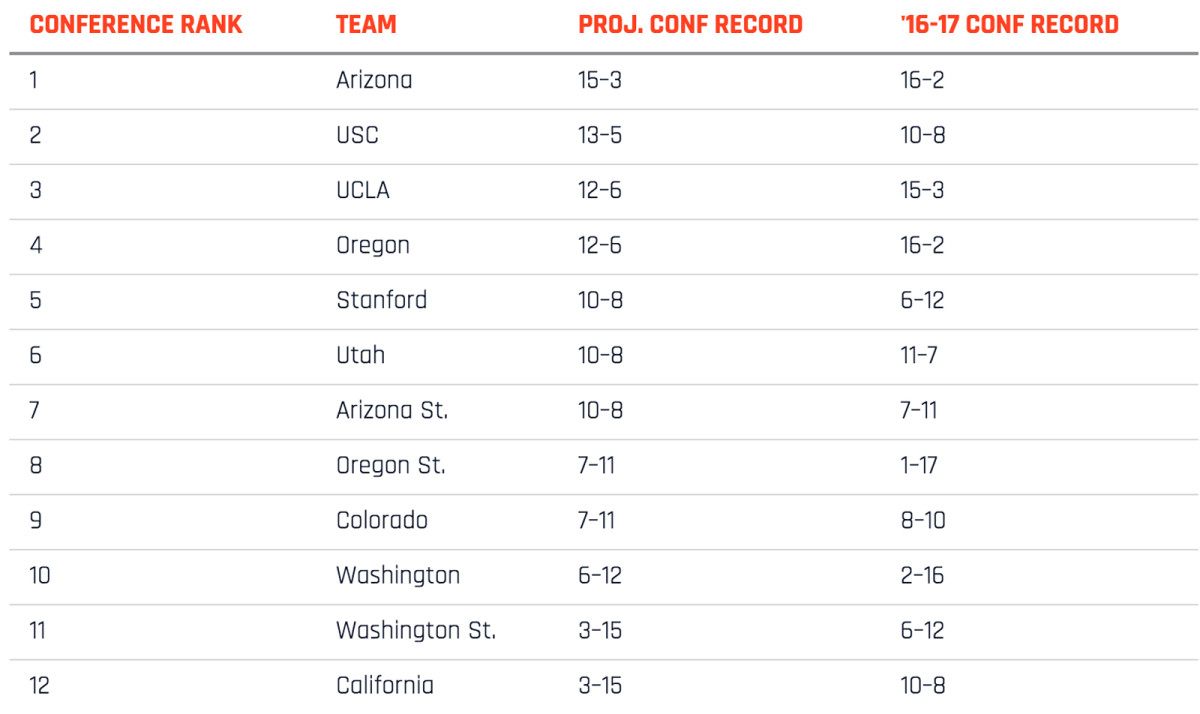
The Skinny on Each Team
1. Arizona (15–3)
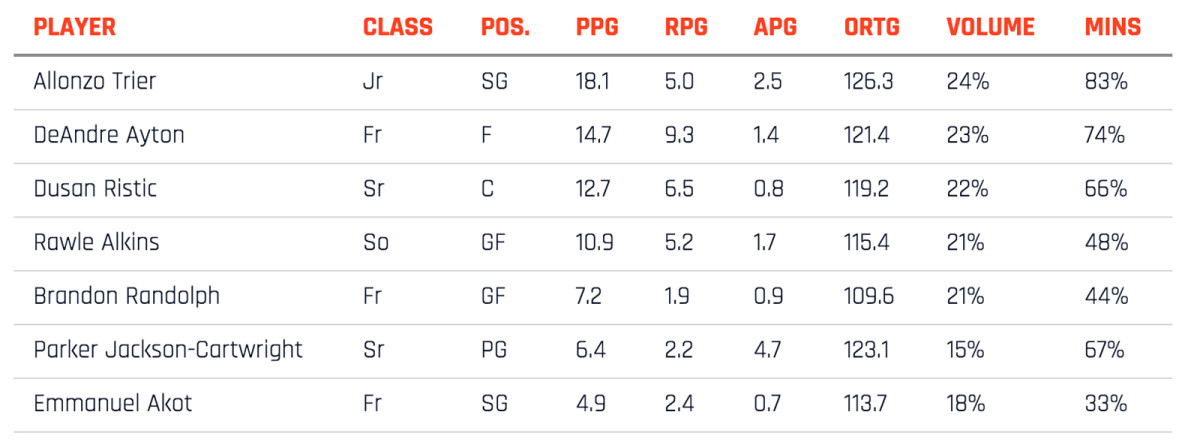
Trier and Ayton will anchor what we project to be the nation’s No. 2 offense, but seven-footer Dusan Ristic and former RSCI top-25 recruit Rawle Alkins (the latter of whom will likely be out until December with a broken foot) are just a couple of the Wildcats’ other weapons. Ayton and Ristic will more than pick up the rebounding lost by Markkanen, and Parker Jackson-Cartwright brings veteran experience at point guard as a senior. The Wildcats’ defense won’t be quite as strong but should hold its own, landing in our top 20.
2. USC (13–5)
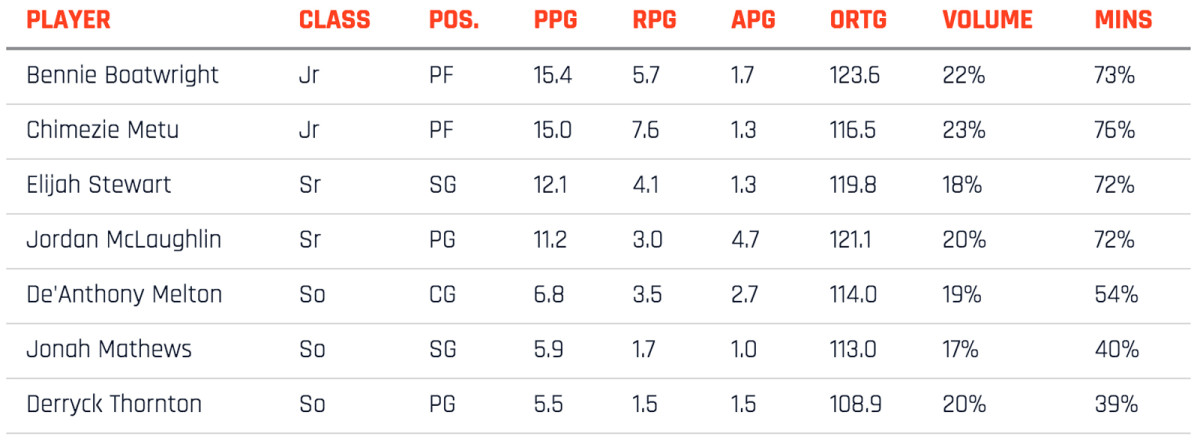
The Trojans bring back a whopping 97% of their minutes from last season’s 26-win team, tied with Bradley for the highest mark in the country; the lone newcomer projected among USC’s top seven scorers is Duke transfer Derryck Thornton. Junior big men Bennie Boatwright and Chimezie Metu are a fearsome duo who we see contributing over 30 points and 13 rebounds per game. Behind both them and senior backcourt mates Elijah Stewart and Jordan McLaughlin, the Trojans’ offense projects to be top 10 in the country.
3. UCLA (12–6)
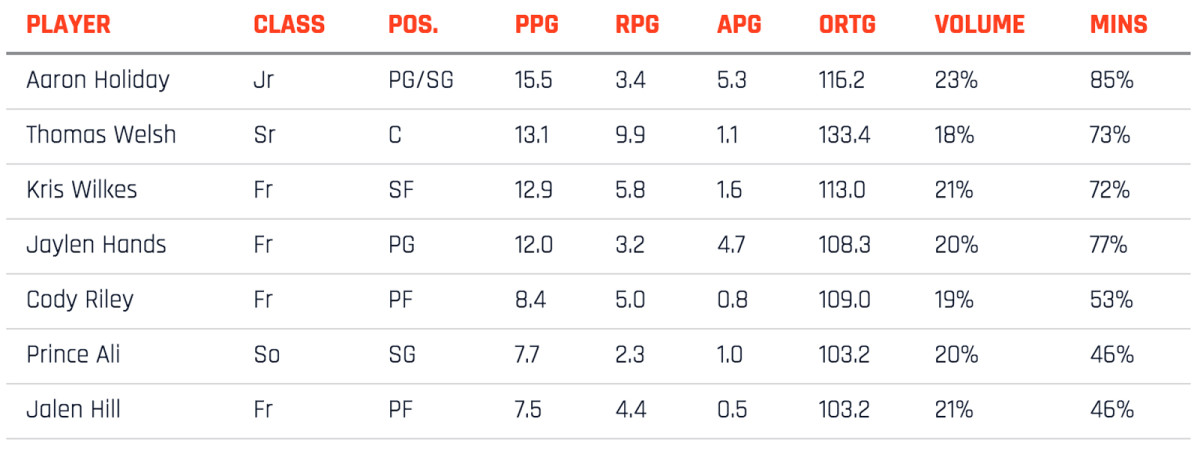
The Lonzo Ball show may still be located in L.A., but a new freshman point guard will be running the show for the Bruins in Jaylen Hands, the RSCI No. 21 recruit in 2017. He’s joined by a number of talented freshmen, including athletic 6’8” wing Kris Wilkes and power forwards Cody Riley and Jalen Hill. Despite all the new faces, UCLA will still by led by experience in junior guard Aaron Holiday and senior center Thomas Welsh. We project the steady Welsh to average just shy of a double double, upping his rebounds-per-game average from 2016–17 by just over one.
4. Oregon (12–6)
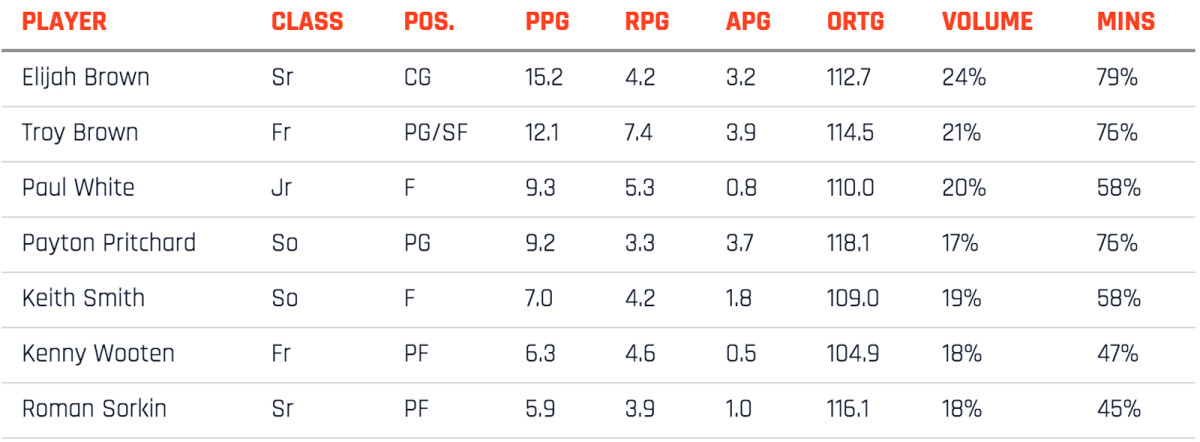
The Ducks bring back just 19% of the minutes from their Final Four team, but a pair of transfers (Elijah Brown and Paul White) and a highly regarded freshman (Troy Brown) will help them reload. Elijah Brown’s projected 15.2 points per game topped our projections of the top transfer scorers in 2017–18, while Troy Brown’s 12.1 landed 13th on our top 50 freshmen. The Ducks’ reinforcements should keep their offense strong, but the defense will see a bit of a drop-off, particularly after the departures of Jordan Bell and Chris Boucher.
5. Stanford (10–8)
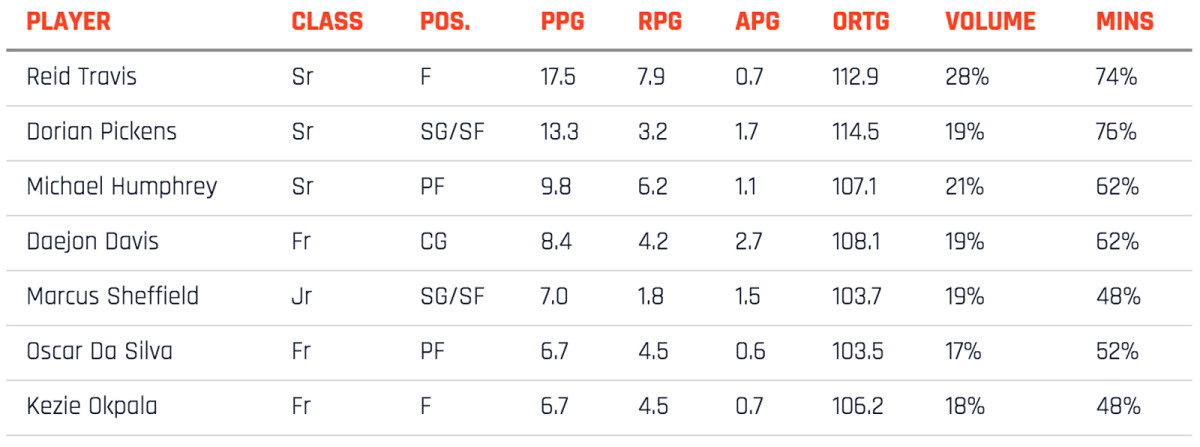
The projected 32-team gap in our yet-to-be-released national rankings between the Ducks and Cardinal serves as a good representation of the cutoff between the top tier of the Pac-12 and the middle. With Reid Travis back, Stanford should be considerably improved after a 6–12 mark in league play in 2016–17, but like the teams below it, it doesn’t project to make our field of 64. That could change if its trio of incoming top-100 freshmen performs even better than expected; we see them combining for nearly 22 points and 13 rebounds per game.
6. Utah (10–8)
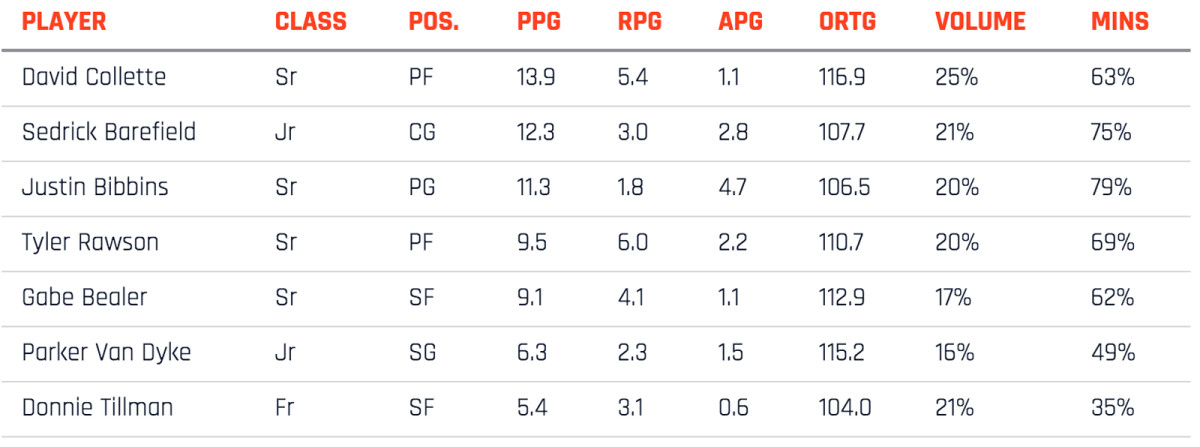
The Utes are right on Stanford’s heels, but like the Cardinal, it will take some work to earn a trip to the NCAAs. Without Kyle Kuzma, Utah’s offense will likely take a step back, but this will be a veteran-laden team. We project senior forward David Collette to lead the team in scoring at 13.9 ppg and Long Beach State grad transfer Justin Bibbins to combine with junior Sedrick Barefield for nearly 24 points and 7.5 assists in the backcourt.
7. Arizona State (10–8)
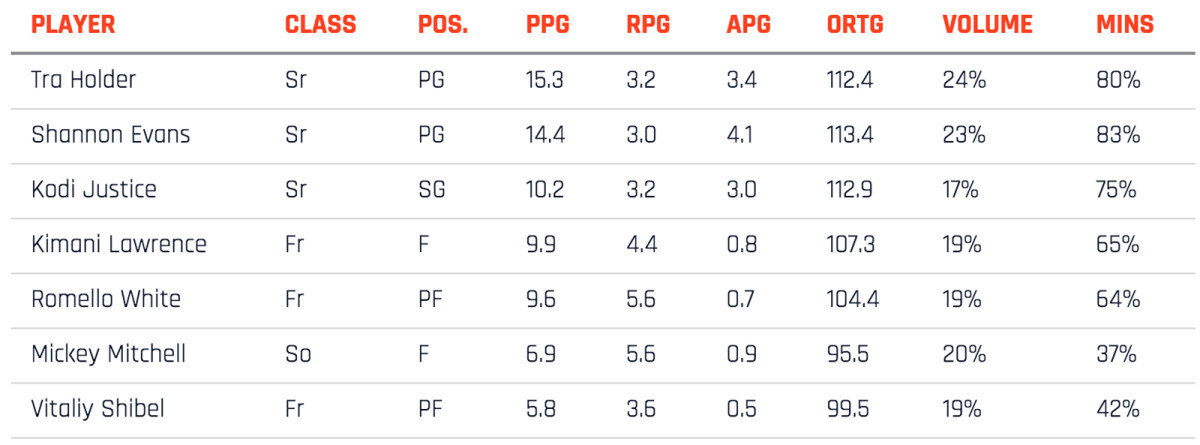
The Sun Devils were held back last year by a weak defense, and while we see that situation improving, their D still projects outside our top 100. With senior backcourt duo Tra Holder and Shannon Evans back, the offense should be steady, despite the fact that our projections have the scoring averages of each dipping slightly. Meanwhile, a pair of top-80 freshmen in wing Kimani Lawrence and power forward Romello White are poised to make an immediate impact. Keep an eye out for 6' 7" Ohio State transfer Mickey Mitchell, who will be eligible in December and is known for his standout vision and passing.
8. Oregon State (7–11)
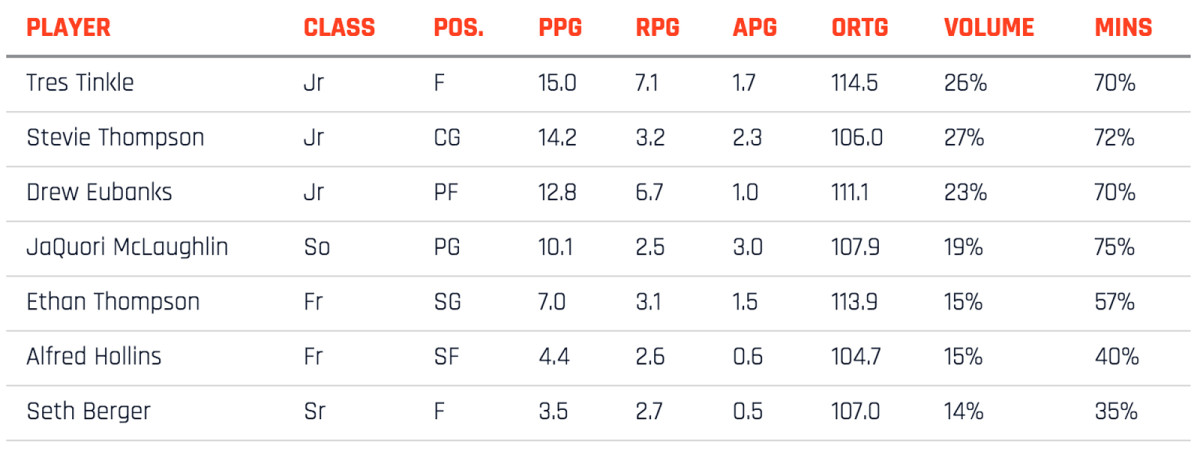
The Beavers suffered through a five-win season (including a 1–17 Pac-12 record) last year that included losing Tres Tinkle, off to a fantastic start, after just six games. Perhaps the biggest omission from the above all-conference team, Tinkle is hoping the third time is the charm as the junior aims to stay healthy for a full year. If he can, Oregon State is a team poised for dramatic improvement, even if it’s not enough to truly make noise in the league. Tinkle is one of four Beavers projected to average double figures, a list that also includes junior guard Stevie Thompson.
9. Colorado (7–11)
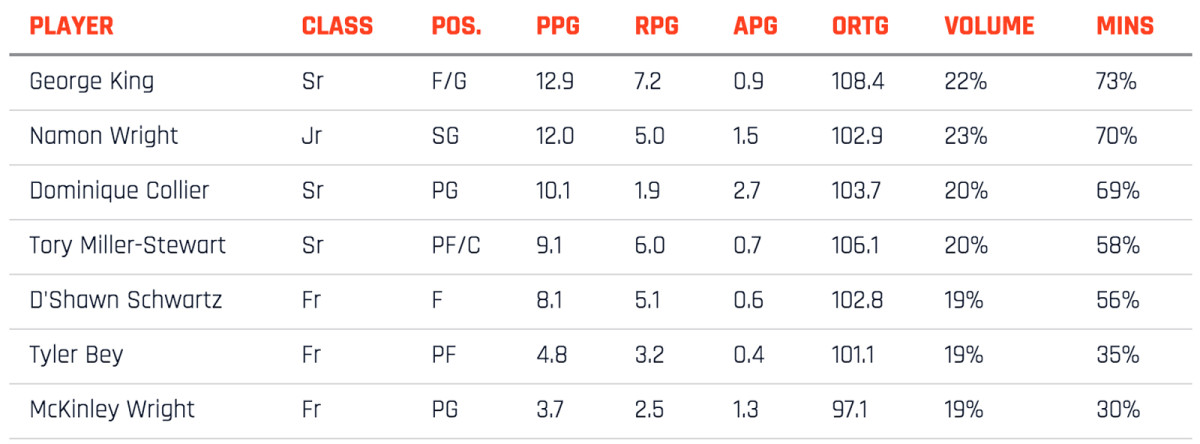
One of five Pac-12 teams bringing back less than 40% of its minutes, Colorado will be turning to some new faces and counting on a couple of last season’s role players, namely Dominique Collier and Tory Stewart-Miller, to take on bigger roles. It will be hard, though, for the Buffaloes to replace the production and efficiency of Derrick White, which is why we see their offense taking a step back.
10. Washington (6–12)
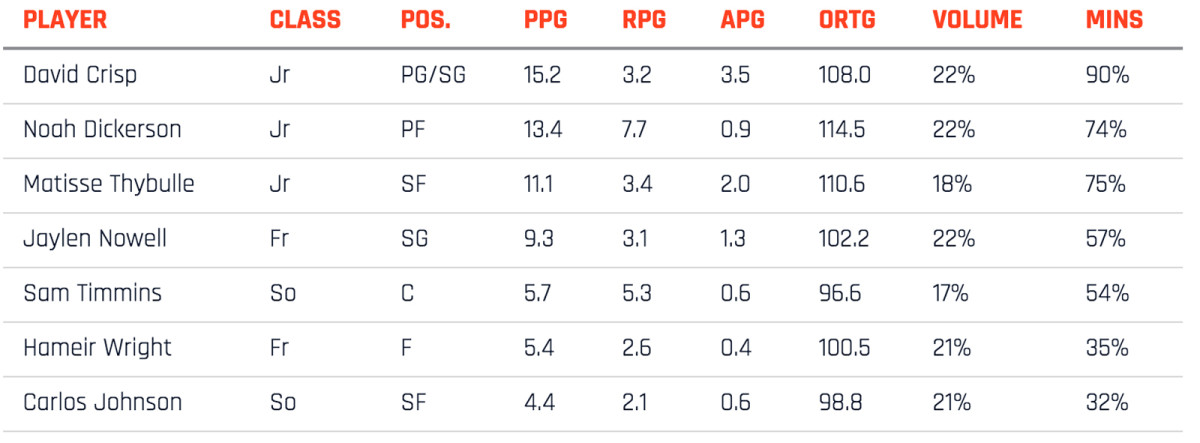
Despite the departure of No. 1 NBA draft pick Markelle Fultz, we see the Huskies improving on their conference record by four wins under new head coach Mike Hopkins. David Crisp should slide into the starting point guard slot and team with freshman Jaylen Nowell in the backcourt, while Noah Dickerson remains the top frontcourt option. Washington doesn’t have a senior among its projected top seven scorers, which is always a positive sign for the future during a rebuild.
11. Washington State (3–15)
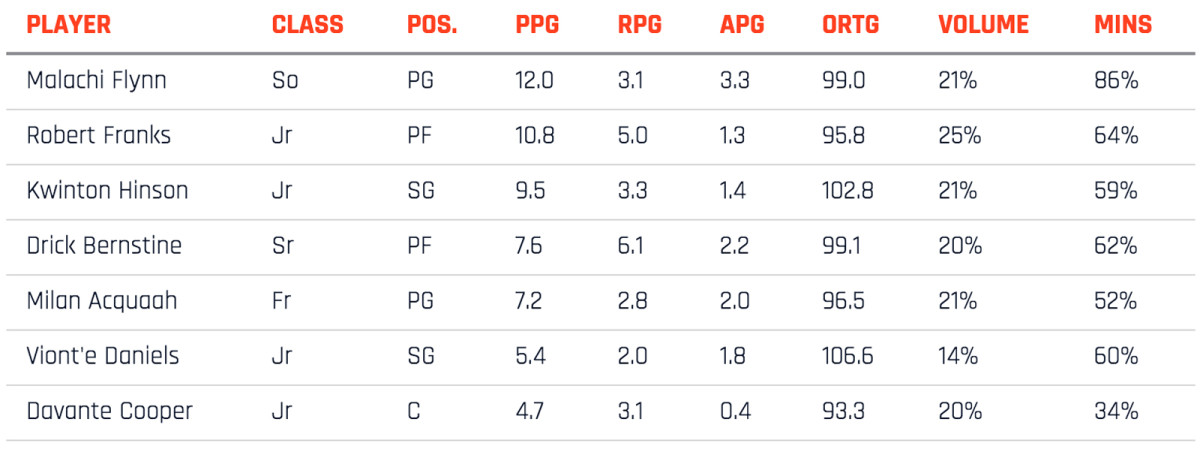
It should be another long season for the Cougars, whose nine-year NCAA tournament drought is the longest in the Pac-12. A pair of Division I transfers and Juco guard Kwinton Hinson will help Wazzu fill out its rotation after losing its top three scorers, and we see point guard Malachi Flynn building on his solid freshman season.
12. California (3–15)
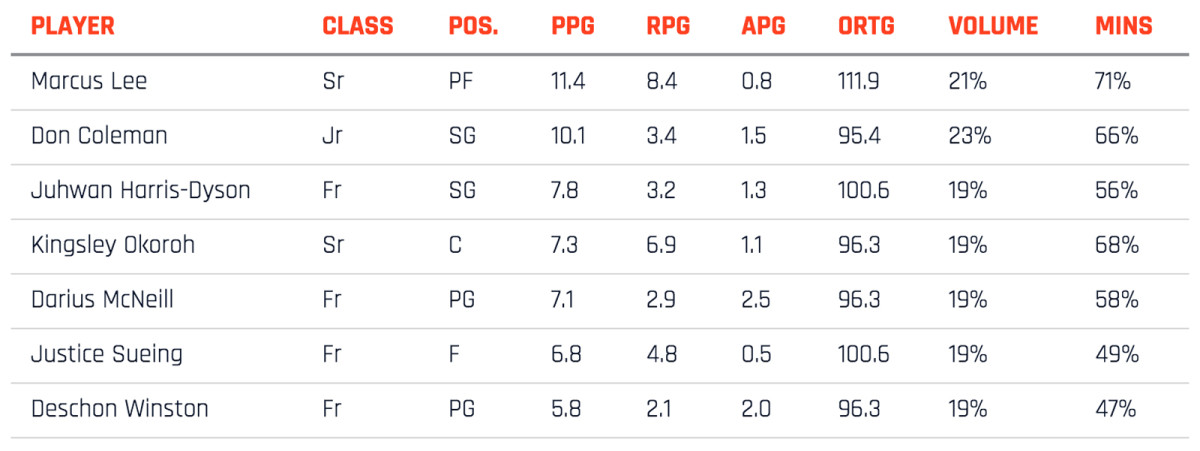
It’s a long way down for the Golden Bears, who we project to go from a 21-win season to the Pac-12 cellar. Cal returns only 16% of its minutes, and even the addition of Kentucky transfer and former top-20 recruit Marcus Lee can only do so much. Lee will be a double-double threat every night, but he’s one of a number of new faces who will start a new Golden Bear era under head coach Wyking Jones.
